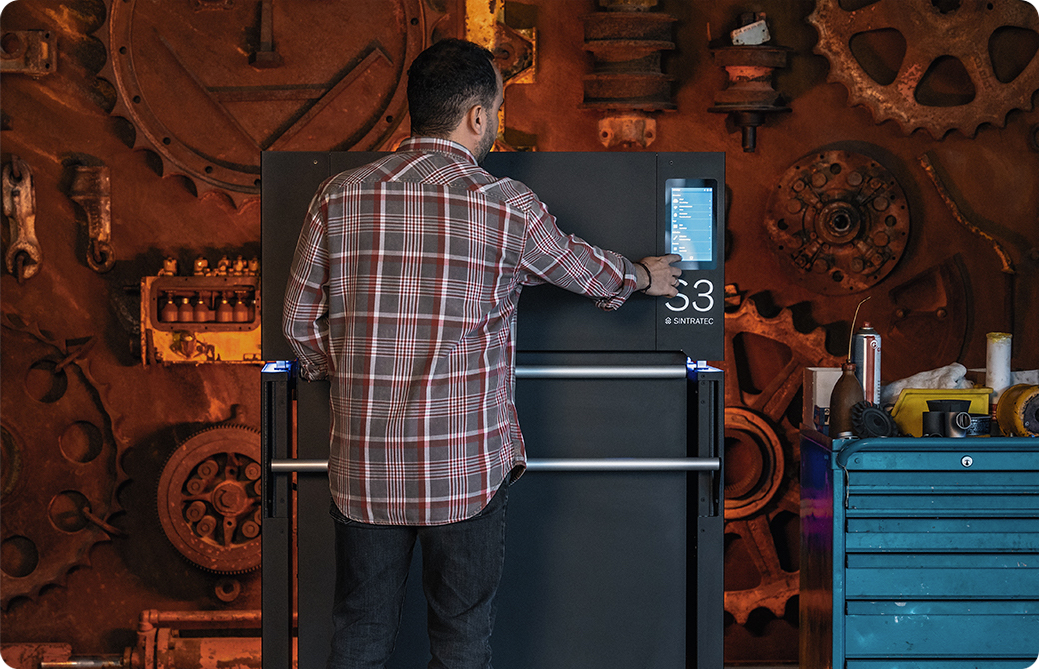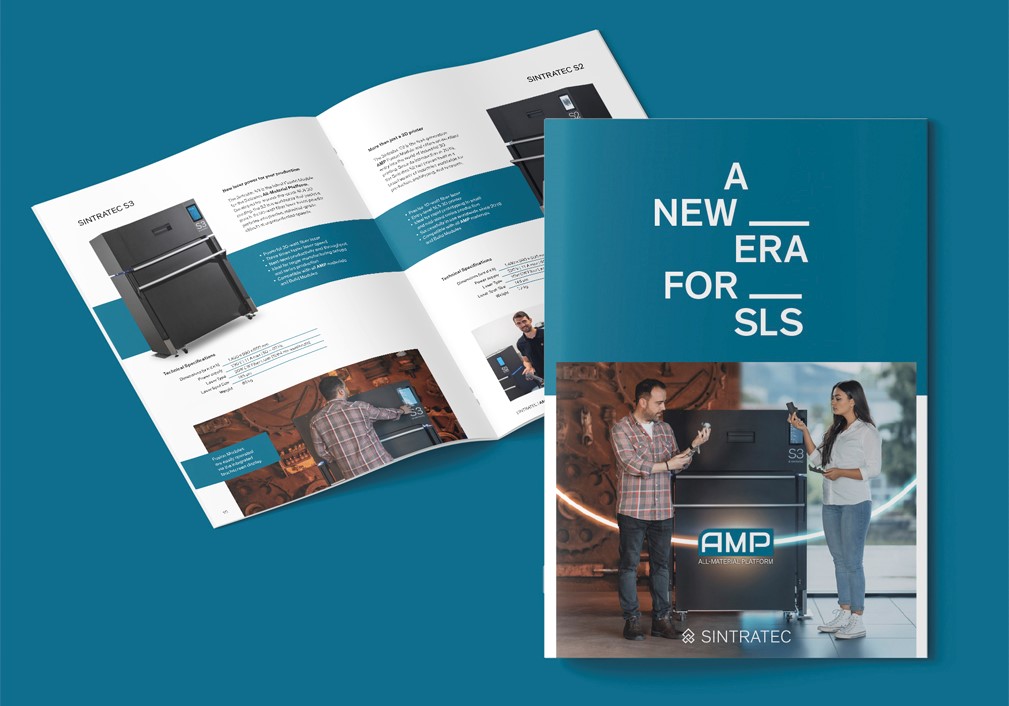Choosing the right 3D printing Material for your SLS Printer
When it comes to 3D printing, the choice of materials is a decision that profoundly affects the outcome of your project. Selective laser sintering (SLS), known for its versatility, precision, and industrial-grade quality, requires an especially thoughtful material selection. In this article, we take a closer look at which powder to choose for which application, and what to consider when it comes to SLS materials and their handling.
The most common 3D printing materials
In the Selective Laser Sintering process, a laser fuses powdered materials, layer by layer, into 3D objects. According to the Wohlers report 2022, polymer powders make up the majority of 3D printing materials with 34.7%, followed by photopolymers (25.2%), filaments (19.9%), and metals (18.2%). This figure shows how relevant the SLS process has become in the additive manufacturing industry. Today, there is a multitude of suitable thermoplastic or metal powders available already. In the following, we will highlight some of the most common materials, explain the key differences and explore some of the applications.
PA12: The robust Allrounder
Polyamide 12, PA12 for short, is one of the most commonly used industrial plastics. Thanks to its outstanding mechanical properties, this polymer is ideal for the production of prototypes and end-use parts that require a high degree of strength and durability. Tests of Sintratec PA12 have shown a max load tensile strength of 53 MPa and a tensile modulus of 1970 MPa. As a reliable and versatile SLS material, PA12 has proven itself in a wide range of industries including automotive, aerospace, tooling, medical or electrical. So if your application requires robust and strong components, then you should take PA12 into consideration.
high strength and robustness, durable, abrasion resistant, chemical resistance
hinges, connectors, housings, complex assemblies, enclosures
TPE: The Flexible One
Thermoplastic elastomer, or TPE, has become a popular choice in additive manufacturing, as it is one of the very few 3D printing materials that possesses elastic, rubber-like properties. TPE results in highly ductile parts that remain dimensionally stable over time. In particular, Sintratec TPE has an impressive elongation at break of 448 percent, with a Shore A hardness of 76. Its 90 percent refresh rate also means that you only need to add 10 percent of fresh powder to your non-sintered material, making it very economical in terms of recycling. So if you need flexible and stretchable parts, then TPE could be your material of choice.
flexible, rubber-like, ductile, soft
grippers, dampers, bellows, soles, handles, hoses
PA12 GF: The resistant variant
This glass-filled PA12 variant is noteworthy, as the glass beads inside the powder reinforce the material, making it much stiffer than its regular counterpart. Sintratec PA12 GF convinces with its impressive tensile modulus of 2700 MPA and is especially well suited for mechanical applications that require dimensional stability. Moreso, its repeatability makes it a particularly user-friendly SLS powder. In summary, if your application needs to be particularly impact resistant and stiff, PA12 GF might be a great fit.
high stiffness and impact strength, high heat deflection temperature values
functional parts, enclosures, housings, tooling
17/4PH Stainless Steel
The so-called Cold Metal Fusion process has made it possible to produce metal parts with polymer SLS printers. A common material is 17/4PH stainless steel. This stainless and hardenable steel alloy convinces with its mechanical properties, high wear resistance and corrosion resistance. Stainless steel 17/4PH requires heat treatment to achieve its properties and is commonly used in industrial environments. Impressively, the CMF process chain produces components with a density of 99.2 percent and an excellent elongation of 13.2 percent after hardening, which exceeds MIM standards.
high strength and hardness, corrosion resistance, durability
tools, gears, machinery components, valves, fasteners, fixtures
Material Switches with SLS 3D printers?
What if you have tried a powder and it does not meet your specifications? Unlike Fused Deposition Modeling (FDM), changing materials on an SLS printer has major implications. Due to the different melting points of thermoplastics, it usually means cleaning your entire system thoroughly, which can take up to several days. In contrast, modular systems such as the Sintratec All-Material Platform simplify this process and enable much faster material changes, as the fusion module with the laser is never in direct contact with the powder. Users can simply have a dedicated build module for each material instead of lengthy cleaning procedures or having to add an entire new printer. In a world first, this also enables metal and polymer materials to be 3D printed on the same system.
This article will be gradually updated whenever more materials become available on the Sintratec All-Material Platform
Conclusion
Choosing the right material for your SLS printer requires a nuanced understanding of the requirements of your application. Whether it’s the exceptional strength of PA12, the rubber-like properties of TPE, the enhanced stiffness of PA12 GF, or the durability of 17/4PH stainless steel, each material offers a unique set of benefits. By aligning your material selection with your project goals, you can unlock the full potential of SLS technology and pave the way for innovative and high-quality prototypes, components, and products.
Need consulting?
Our team is happy to advise you and to begin your journey into the world of SLS. Contact us right away!








